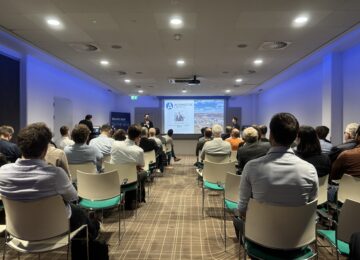Principles Flextender province of Utrecht published
Network operators Stedin and TenneT last week published a market call for tenders to serve as the basis for a Flextender for the province of Utrecht. By doing so, the grid operators hope to solicit temporary power supplies towards the market for the growing grid congestion problems in the province. This market call follows a Parliamentary letter from former Minister Rob Jetten in which he announced that far-reaching measures are needed to alleviate the dire situation on the Utrecht power grid. The call for tenders calls on parties to respond so that this input can be included in the final tendering procedure.
Market demand: 60MW of relocatable capacity
Based on the market call now published, it is clear that grid operators are looking for systems that contribute to congestion mitigation by providing electricity on demand (activation via the GOPACS platform) at the request of the grid operator. The scope of the contract is 60 MW of mobile and on-demand power. This capacity should consist of sections of up to 10 MW each. The required capacity is expected to increase to 120 MW and possibly 250 MW by 2029, according to current understanding. Based on the market party's offer, the framework agreement allows for scaling up from 60 MW to a maximum of 250 MW during the contract period.
Current understanding of the congestion profile indicates that by 2029 there will be congestion blocks of up to 35 consecutive hours with a capacity shortfall. The maximum consecutive congestion duration per year will gradually increase from 2026 until it peaks in 2029, before grid reinforcement is completed. Partly because of the uncertainty of congestion peaks, Stedin and TenneT are therefore looking for systems that can deliver electricity for 50 consecutive hours
To compensate the market party for providing the power on demand service, an appropriate compensation model has been developed. The model consists of three "traffic light" components: an availability fee (yellow), a variable fee per activation (red) and possibly a discount for the Grid Operator if the market party is given room to deploy the power elsewhere (green).
Energy Storage NL: enable hybrid solutions
Because of the relocatable power required and the consecutive hours that electricity must be supplied, grid operators are looking primarily at gas or diesel generators to spare the congested power grid in the province of Utrecht.
Energy Storage NL has previously indicated that a combination of gas and diesel generators with batteries can reduce the hours of operation of these generators, thereby reducing additional CO2 emissions. Energy Storage NL therefore advises grid operators to also allow hybrid solutions in the eventual flextender, this can be done by including a sustainability criterion as a weighting factor in the tender.
The industry association is calling on all its members to respond to the published market survey so that input from the industry will be included in the final tender. We would also like to receive this input directly from our members so that we can incorporate it into future flex tenders. Similarly, earlier this week the Flevopolder announced that they want to use flextenders. It is important that the voice from the storage industry be well represented in these tenders. The tender closes on Aug. 8.
All documents surrounding the flextender are here find. Input can be sent to info@energystoragenl.nl





